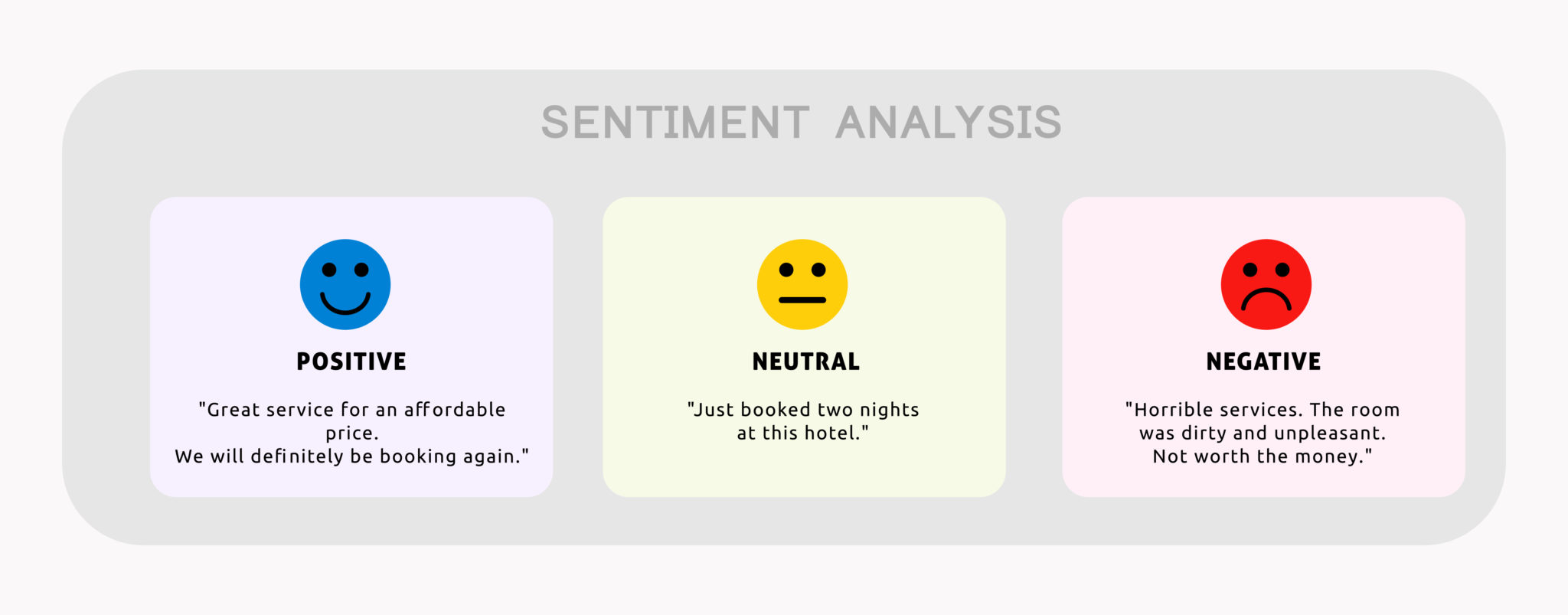
Sentiment Analysis
Feb 07, 2018Sentiment Analysis, also known as opinion mining, is a natural language processing technique used to determine the sentiment expressed in a piece of text. It involves classifying the sentiment of a text as positive, negative, or neutral. In recent years, Sentiment Analysis has gained significant attention due to its applications in various fields such as marketing, customer feedback analysis, and social media monitoring.
Support Vector Machines (SVM) are a popular machine learning algorithm used for classification tasks, including Sentiment Analysis. SVMs are particularly effective in dealing with high-dimensional data and are well-suited for binary classification problems like sentiment analysis.
- Data Collection and Preprocessing: The first step is to gather the text data for analysis. This could be customer reviews, social media posts, or any other form of text data. The collected data is then preprocessed to remove noise, such as special characters, stopwords, and punctuation, and perform tokenization.
- Feature Extraction: Next, the text data is converted into numerical feature vectors that can be used as input to the SVM model. Common techniques for feature extraction in Sentiment Analysis include Bag-of-Words (BoW), Term Frequency-Inverse Document Frequency (TF-IDF), and word embeddings such as Word2Vec or GloVe.
- Training the SVM Model: The preprocessed and feature-extracted data is split into training and testing sets. The SVM model is trained on the training set using the labeled data, where each text sample is associated with a sentiment label (positive or negative). During training, the SVM learns to find the optimal hyperplane that separates the data points belonging to different sentiment classes.
- Model Evaluation: After training, the performance of the SVM model is evaluated using the testing set. Common evaluation metrics for Sentiment Analysis include accuracy, precision, recall, and F1-score. The model's performance is assessed based on how well it predicts the sentiment of unseen text data.
- Prediction: Once the SVM model is trained and evaluated, it can be used to predict the sentiment of new text data. The model takes the feature vectors of the input text as input and classifies it as either positive or negative based on the learned decision boundary.

SVM Workings
Support Vector Machines (SVM) work by finding the optimal hyperplane that best separates the data points belonging to different classes in a high-dimensional space.
In the context of Sentiment Analysis, SVMs aim to find a hyperplane that effectively separates text samples with positive sentiment from those with negative
sentiment.
To achieve this, SVMs transform the text data into feature vectors using techniques like Bag-of-Words or TF-IDF. These feature vectors represent the frequency or
importance of each word or phrase in the text. The SVM then learns to classify the text samples based on these feature vectors, with the goal of maximizing the
margin between the different sentiment classes.
During training, the SVM algorithm iteratively adjusts the hyperplane to minimize classification errors and maximize the margin, thus improving its ability to
generalize to unseen data. Once trained, the SVM model can predict the sentiment of new text samples by examining their feature vectors and classifying them
based on their position relative to the learned decision boundary.
Sentiment Analysis with Support Vector Machines (SVM) is a sophisticated natural language processing technique that leverages the power of machine learning to discern the sentiment expressed in textual data. At its core, SVM operates by transforming textual inputs into high-dimensional feature vectors, where each feature represents a specific aspect of the text, such as word frequency or importance. The SVM algorithm then seeks to find the optimal hyperplane that separates these feature vectors into different sentiment classes, such as positive and negative. This separation is achieved by maximizing the margin between the classes, ensuring robust classification performance even in the presence of noise or ambiguity in the data.
SVMs are particularly effective in sentiment analysis due to their ability to capture complex relationships between words and sentiment labels, allowing them to discern subtle nuances in language and context. Furthermore, SVMs offer several advantages, including robustness to overfitting, scalability to large datasets, and flexibility in accommodating different types of feature representations. However, the effectiveness of SVMs in sentiment analysis depends on careful hyperparameter tuning and the availability of labeled training data.
Despite these challenges, Sentiment Analysis with SVM holds immense potential in various real-world applications, including market research, brand monitoring, financial analysis, and customer service, where understanding and interpreting sentiment from textual data are paramount for informed decision-making and business success.